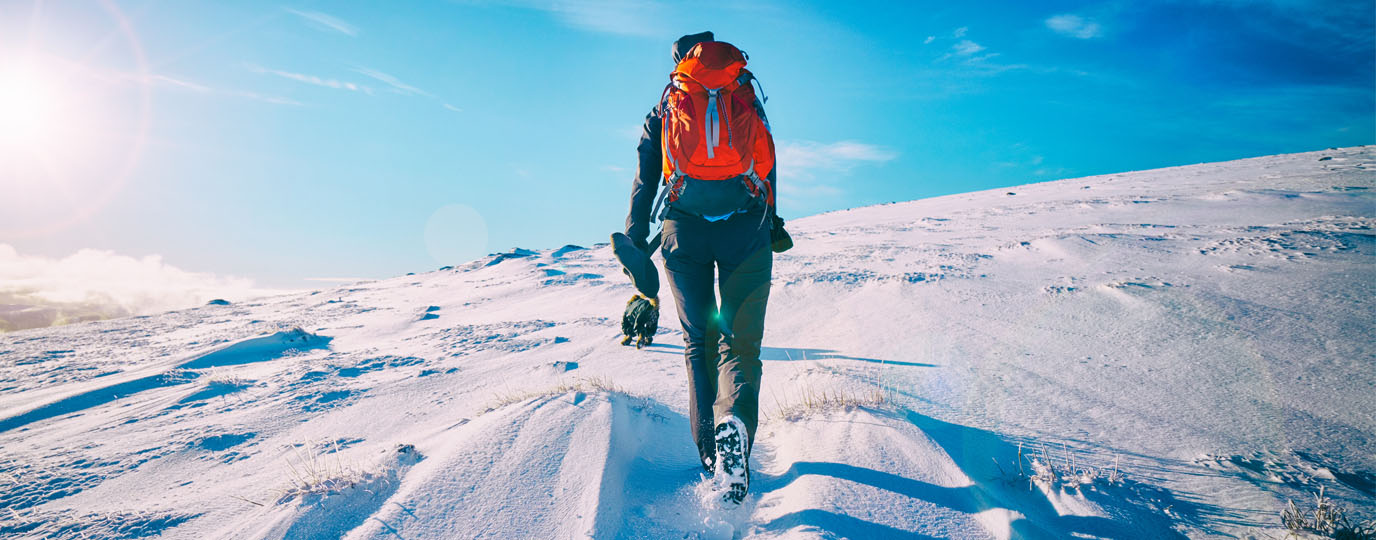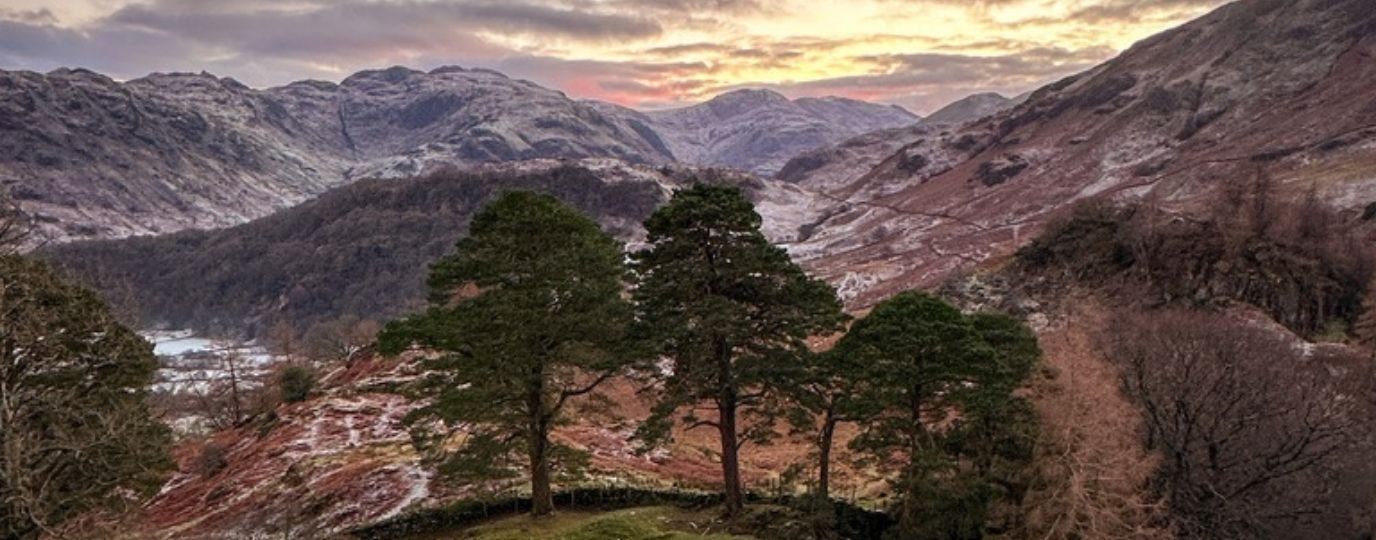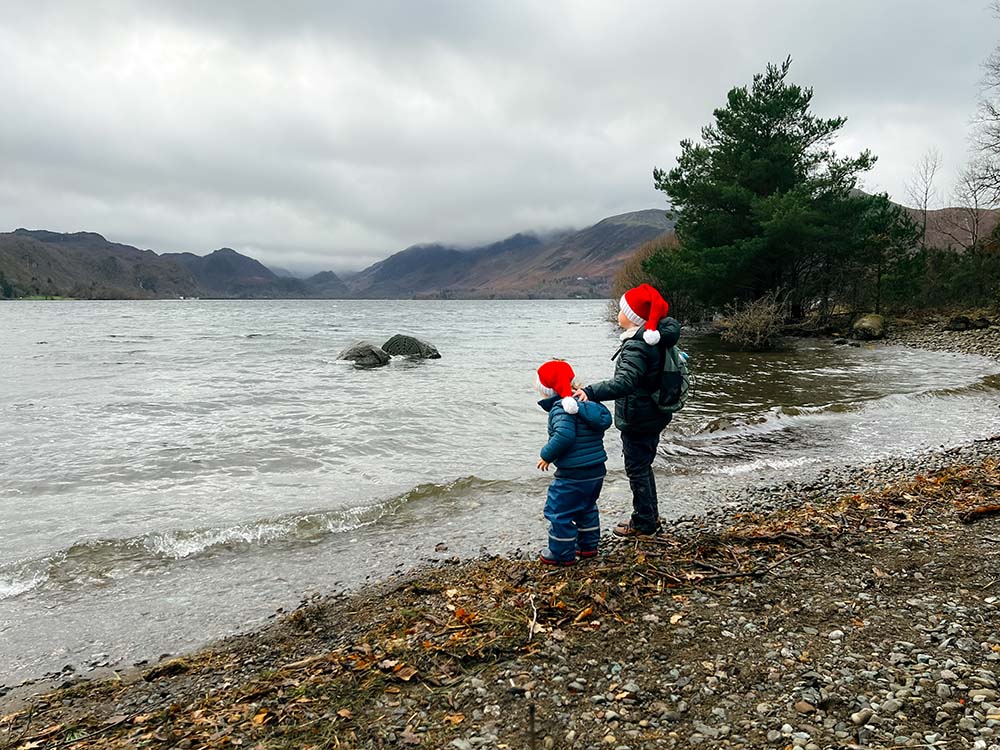With cold weather expected to hit Britain over the next few days, here’s a quick guide to walking in snow from hiker, snowboarder and OS GetOutside Champion Jonathan Elder.
I rather like walking in snow, especially if I can be the first to create tracks in a new area. It also has a sound dampening effect, leading to beautiful serene silence on still day. But if you are not confident walking in snow, here’s my top tips!
Walking on a thin dusting of snow
- Avoid smooth-soled shoes.
- Pavements and smooth rock will be slippery, but generally off-road trails will be fine
- It may be much deeper in places, so read on!
Walking in shallow snow
- You will need waterproof boots, but the colder it is the ‘dryer’ it gets.
- It’s not actually slippery! Fresh snow will give you decent grip as long as you use boots with a tread. On slopes, aim for fresh untracked snow for best grip – compacted snow will be more slippery.
- You will tend to use a bit more energy and be slower, like walking on soft sand, so plan for shorter routes.
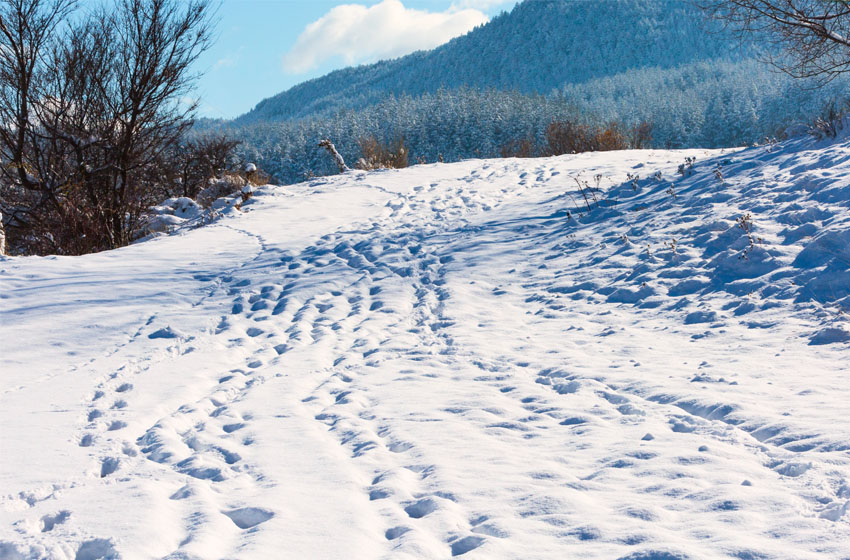
Walking through medium depth snow
(more than a few cm, less than knee height)
- You will need waterproof boots, plus gaiters or waterproof/snow trousers. The main goal is to stop snow getting inside your boots. Wool-based socks are much warmer if they do get wet.
- It will start to get hard to identify paths, so use your map or GPS, plus features like fences or tree lines more.
- Small dips may conceal ankle-twisting and foot soaking deeper features especially streams, which you may hear before you can see. A walking pole can help you check depth.
- Walking in deeper snow will slow and tire you considerably. Follow existing tracks where possible, or if you are creating a new one rotate who is in the lead, and follow their footsteps.
Deep snow, knee height
- Much the same as above, but it’s even slower and more tiring!
- Even tall features like walls and fences can be obscured, making navigation a challenge. A GPS or phone with a clear route line is a good idea.
- On hills be very aware of a snow cornice – which is snow that goes over the crest of a hill, but has no support. You can fall through or collapse the cornice with no warning. Keep clear of edges, and use a walking pole to test suspect bits.
Walking in really deep snow, waist height or more
- Incredibly difficult unless you are using snowshoes or skis. Moving even short distances in snow this deep is exhausting.
- It’s often deep enough (and cold enough) to walk over smaller features like streams and gullies.
- Areas below trees can form “tree wells”, with steep sides that collapse when you try and climb out. Avoid getting too close, especially to fir trees.
- Snowshoes are fun!
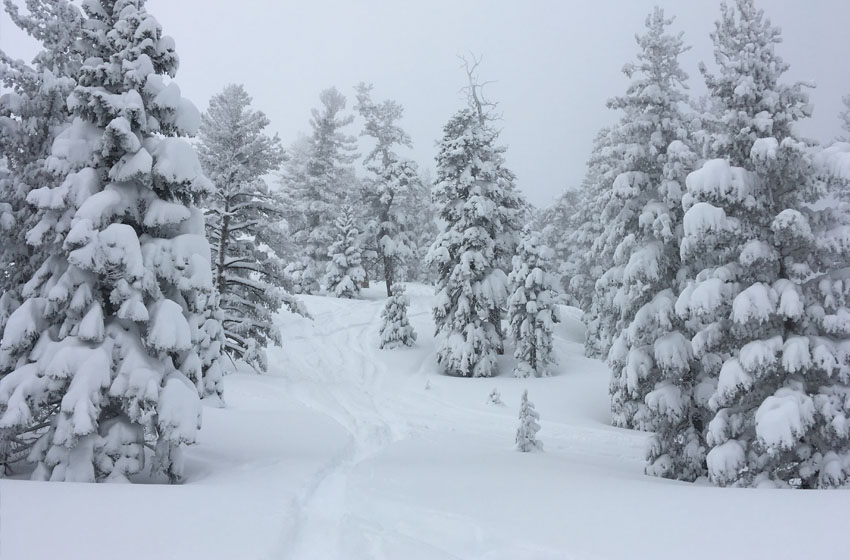
Walking on ice, compacted or frozen snow
- Mostly found in sub-zero temps in places where lots of people have walked, or where the temperature has risen enough to partly melt the snow, and then dropped again.
- Can be spotted as frozen snow and white ice reflects more light than soft snow, and makes much less noise underfoot. Black ice can also look like water, but you know the temperature low enough for it to freeze, and tends to be especially slippery.
- Can be as hard as concrete, especially when it’s more than a few degrees below zero. Falls on ice hurt!
- Can be concealed by thin layers of fresh or drifted snow, making for an unpleasant slippery surprise.
- If you can, use spiked boots, rubber slip on ice grips or crampons. Walking poles with spike tips give extra stability. On harder ice stamp down so your spikes get purchase.
- Keep your knees slightly bent, your steps low and short and your hands out for balance – imagine you are a penguin!
- Avoid stepping on to just your heel – place your foot flat to use your whole foot for grip, and don’t transfer your weight until it feels secure.
- When on downslopes without ice spikes it’s sometimes easier to deliberately slide, snowboarder style.
- Upslopes without ice spikes can be impossible! Go around, pick another path, or try another time.
Walking on frozen lakes or rivers
- Easy to spot even under snow as it will be really flat.
- Like compacted snow, ice grips and walking poles will make it much easier.
- Be extra careful. A frozen lake or river may be fine in some spots, and dangerously thin in others. The most dangerous parts are those sheltered by trees or where the water is fast-moving. Avoid walking over ice unless it’s been well below zero for at least a week. It’s rare in the UK to find anything larger than a pond that’s safe to walk on.
- Ice may have water underneath, or just an air gap.
- Creaks and groans indicate shifting ice, which may fail soon. Sudden sharp cracks indicate it’s breaking imminently – get on to land immediately or spread your weight by crawling to a safe spot.
- Smashing the ice on puddles is fun, whatever your age.

7 top tips for getting outside in the rain
When it’s damp and dreary outside there’s still so much fun to be had! Here are 7 top tips for enjoying the outdoors when the weather’s not playing ball. Pull on your wellies, put on your waterproofs and get outside in the rain!

Winter Hiking Tips from Mountain Rescue – Staying Safe in the Dark
As the days get shorter it’s important to take extra precautions when getting outside. Mountain Rescue share their expert advice for staying safe in the dark.
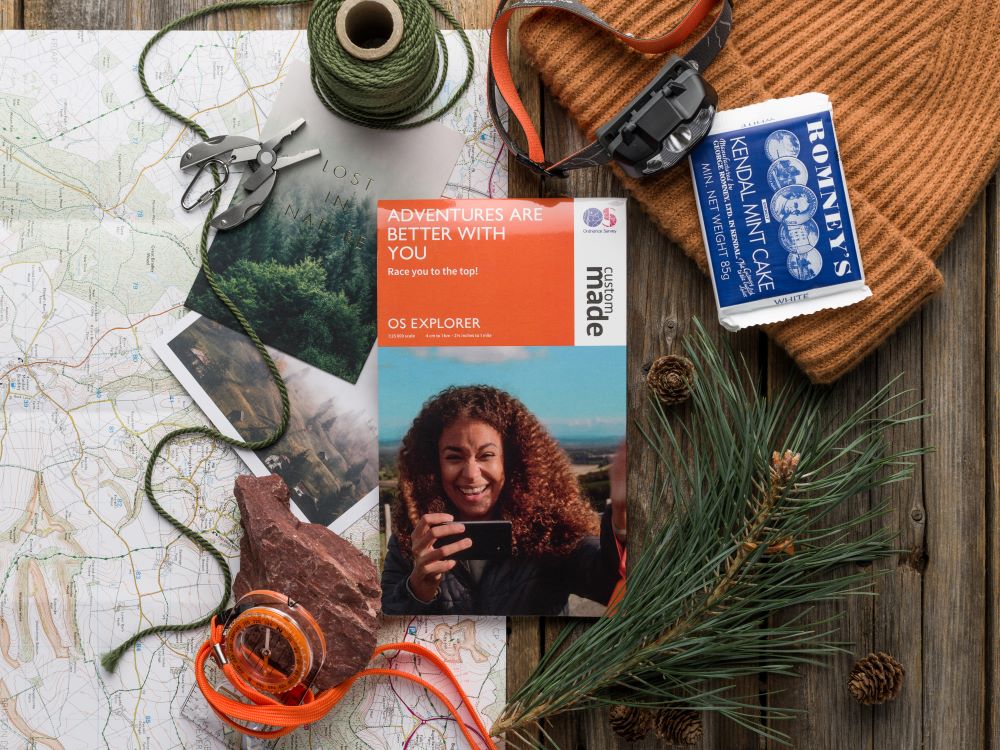
Outdoorsy Christmas Gift Ideas from Ordnance Survey Champions!
Need some Christmas Gift Inspiration? Our OS Champions have picked out some great outdoorsy gift ideas for your adventure loving friends and family
